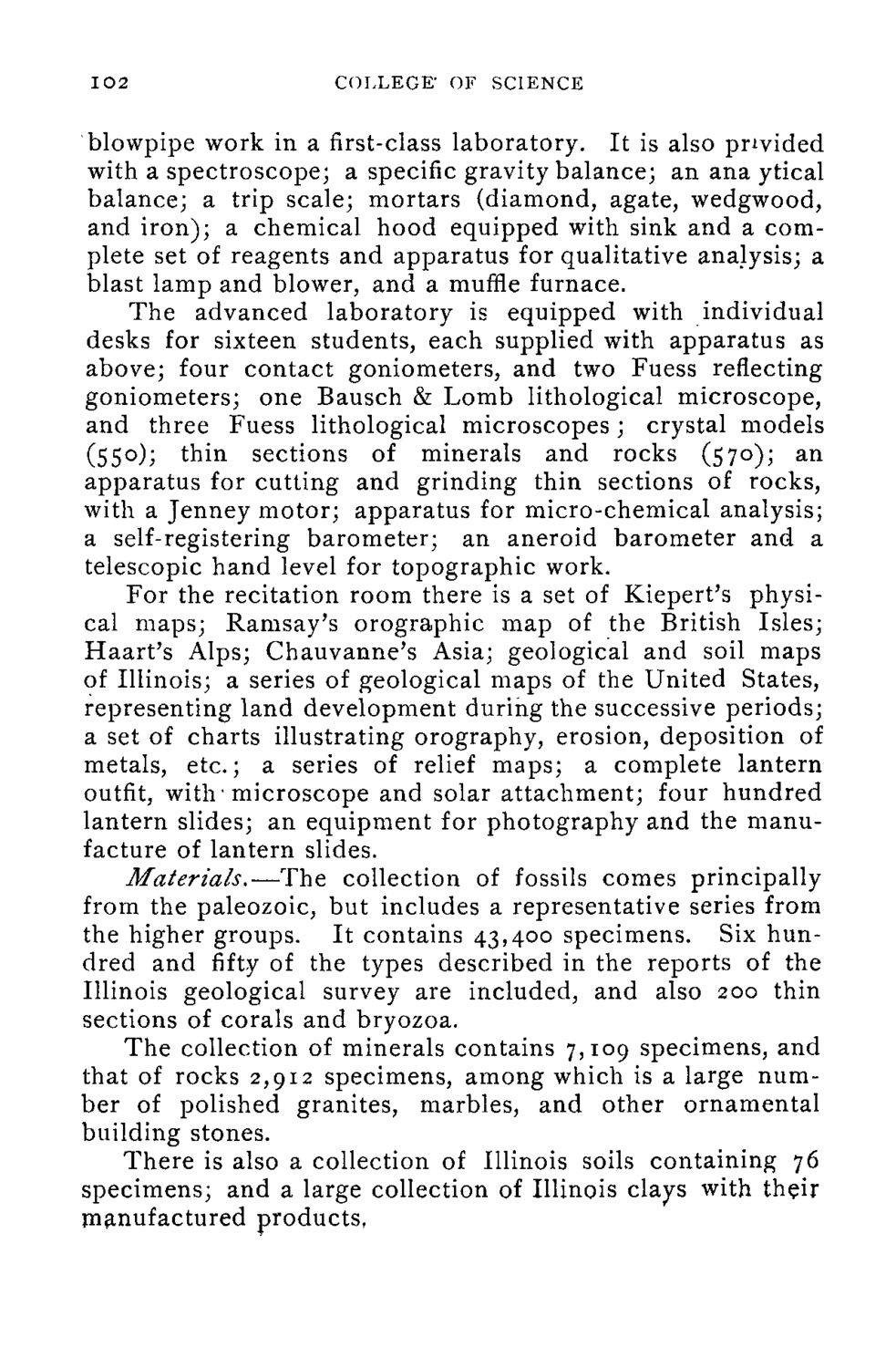| |
| |
Caption: Course Catalog - 1896-1897
This is a reduced-resolution page image for fast online browsing.

EXTRACTED TEXT FROM PAGE:
102 COLLEGE' OF SCIENCE blowpipe work in a first-class laboratory. It is also provided with a spectroscope; a specific gravity balance; an ana ytical balance; a trip scale; mortars (diamond, agate, wedgwood, and iron); a chemical hood equipped with sink and a complete set of reagents and apparatus for qualitative analysis; a blast lamp and blower, and a muffle furnace. The advanced laboratory is equipped with individual desks for sixteen students, each supplied with apparatus as above; four contact goniometers, and two Fuess reflecting goniometers; one Bausch & Lomb lithological microscope, and three Fuess lithological microscopes; crystal models (550); thin sections of minerals and rocks (570); an apparatus for cutting and grinding thin sections of rocks, with a Jenney motor; apparatus for micro-chemical analysis; a self-registering barometer; an aneroid barometer and a telescopic hand level for topographic work. For the recitation room there is a set of Kiepert's physical maps; Ramsay's orographic map of the British Isles; Haart's Alps; Chauvanne's Asia; geological and soil maps of Illinois; a series of geological maps of the United States, representing land development during the successive periods; a set of charts illustrating orography, erosion, deposition of metals, etc.; a series of relief maps; a complete lantern outfit, with'microscope and solar attachment; four hundred lantern slides; an equipment for photography and the manufacture of lantern slides. Materials,—The collection of fossils comes principally from the paleozoic, but includes a representative series from the higher groups. It contains 43,400 specimens. Six hundred and fifty of the types described in the reports of the Illinois geological survey are included, and also 200 thin sections of corals and bryozoa. The collection of minerals contains 7,109 specimens, and that of rocks 2,912 specimens, among which is a large number of polished granites, marbles, and other ornamental building stones. There is also a collection of Illinois soils containing 76 specimens; and a large collection of Illinois clays with their manufactured products,
| |